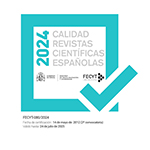Vivienda social para la población desplazada y segregación residencial en Ibagué, Colombia
Resumen
Este artículo determina cuál ha sido la política de vivienda social que se ha desarrollado para la población desplazada en Colombia y esta cómo se relaciona con la segregación residencial de este tipo de vivienda en Ibagué, entre el 2004 y el 2019. Utilizando el método hermenéutico se analiza las leyes y decretos que se han sido la base de la política de vivienda social para la población desplazada y para determinar si esta normatividad genera segregación socioespacial de este tipo de vivienda, se geolocalizan los proyectos inmobiliarios construidos en Ibagué y se cruza esta información con plan de ordenamiento de la ciudad del 2000 y el 2014. Entre los principales resultados se encuentra que la localización de las viviendas sociales promueve la segregación residencial de la ciudad es decir, la población vulnerable adquiere un techo que en cuanto a su área construida es pequeño, lo que cambia la dinámica de hábitat de la que venía de sus ciudades de origen.
Descargas
Descarga artículo
Licencia
La revista Anales de Geografía de la Universidad Complutense, para fomentar el intercambio global del conocimiento, facilita el acceso sin restricciones a sus contenidos desde el momento de su publicación en la presente edición electrónica, y por eso es una revista de acceso abierto. Los originales publicados en esta revista son propiedad de la Universidad Complutense de Madrid y es obligatorio citar su procedencia en cualquier reproducción total o parcial. Todos los contenidos se distribuyen bajo una licencia de uso y distribución Creative Commons Reconocimiento 4.0 (CC BY 4.0). Esta circunstancia ha de hacerse constar expresamente de esta forma cuando sea necesario. Puede consultar la versión informativa y el texto legal de la licencia.












